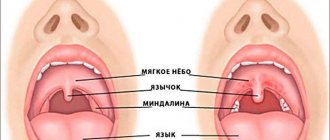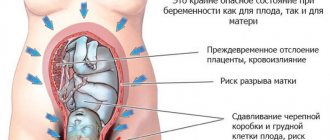Why does it appear
Pain in the coccyx is called coccydynia in medical terminology.
A fairly common phenomenon among women in an interesting position. Determining the cause of the syndrome is not easy, since many factors can trigger it. Most often, pain manifests itself in the form of such pathologies:
- proctalgia;
- anorectal pain;
- coccydynia;
- anal pain.
Basically, severe pain is observed, which is localized in the perineum, anus, and tailbone. In this case, the pain can have a different character:
- tingling;
- Blunt pain;
- spicy.
In most cases, pain is transmitted to other organs: lower abdomen, thighs, buttocks. There may also be a feeling of heaviness in the rectum, which is accompanied by burning and itching.
Pregnancy without tailbone pain
There are only a few people who do not experience any discomfort when carrying a future baby. The rest suffer from toxicosis, low blood pressure and pain in the back. Sometimes the tailbone hurts so much that it radiates to the legs, pulls the back, it hurts to walk and sit, but the doctor does not find anything serious during the examination - the pelvis expands and the body prepares for childbirth.
In this case, you just need to endure it, while simultaneously trying to reduce the symptom with the tips described above. Pregnancy and pain in the tailbone go hand in hand, and after childbirth, the exhausting and inconvenient symptoms will disappear on their own. And remember, if pain occurs, you must immediately visit the attending physician’s office; he will be the one who will assess the condition of the expectant mother and prescribe the necessary therapy.
What happens
It will be useful for every woman to know whether the tailbone can hurt during pregnancy.
During this period, the body faces dramatic changes. Pain syndrome has three main etiologies:
- Physiological. Mostly appears in early pregnancy. This period is accompanied by rapid changes in hormonal levels. The location of the pelvic bones changes, and the tailbone moves back. The uterus begins to enlarge and puts pressure on the tailbone. This process can cause pain in the following trimesters. In the last trimester, neuralgic pinching often develops.
- Psychological. The emotional state during pregnancy is not stable. Given this psychosomatics, a woman may encounter various physical diseases. Anxiety and fear of childbirth haunts everyone. Against this background, pain in the tailbone may appear.
- Pathological. Such reasons include injuries, surgery, and spinal diseases. The pathologies that a woman encountered before pregnancy often remind themselves at this time. Even childhood injuries can result in dull or sharp pain.
Only a doctor can help determine the etiology of pain in the tailbone. At the same time, he studies the woman’s medical history and selects safe drug therapy.
Pain in the tailbone during pregnancy. When should you be wary?
- Severe pain in the tailbone during pregnancy, occurring periodically and with enviable consistency, with noticeable tingling, can be the beginning of miscarriage and spontaneous abortion. In addition to these symptoms, there is a pulling in the stomach or back.
- If, in addition to pain, unusual discharge (especially bloody) appears or the body temperature rises, this is a signal to immediately consult a doctor.
Placental abruption with hematoma begins with sacral pain. This happens especially often when the placenta is located on the posterior wall.
Gymnastics for pain in the tailbone
If, after visiting a doctor, no dangerous causes of pain in the lower back and tailbone during pregnancy are identified, then you can alleviate your condition in the following ways:
- ordinary gymnastics (in particular, the well-known “kitty”), on a special gymnastic ball or swimming;
- choosing a new sleeping position that is more suitable at the moment;
- by moving a lot (without overwork), you will avoid stagnation in the pelvic organs;
- wearing a prenatal bandage;
- more comfortable (hard) stool during prolonged sedentary lifestyle in early pregnancy.
You can also use an ointment for pain in the tailbone during pregnancy, for example, Traumeel.
Video on the topic " Pain in the tailbone in early pregnancy "
Causes
In most cases, it is difficult to understand why pregnant women have pain in their tailbone. There are a large number of reasons that cause this syndrome. These include:
- Injuries, surgeries undergone before pregnancy.
- The expansion of the pelvic bones and the shift of the tailbone back causes pain. This process is inevitable, since there must be room for the baby to exit.
- The second and third trimester is accompanied by a significant increase in the uterus. This puts a lot of pressure on the bones. The spine, coccyx, and sacrum are especially affected.
- Neurological entrapment.
- Threat of premature birth and miscarriage.
- Insufficient amount of magnesium or calcium in a woman’s body.
- Inflammation in the intestines, uterus, ovary, appendages.
- Deposition of salts in joints.
- Chronic diseases of the spine.
- Hemorrhoids, anal fissures, proctitis.
- Constipation, prolonged sitting on the toilet.
- Psychosomatics.
A doctor will help determine the specific cause of pain syndrome after a thorough diagnosis.
Pain in the tailbone during pregnancy, why does the tailbone hurt during pregnancy?
Most women wonder why the tailbone hurts so much during pregnancy. The causes of pain can be physiological or due to various diseases. In most cases, the reasons are:
- Proctalgia;
- Anorectal pain;
- Neuralgia of the anus;
- Coccydynia of the anal part.
During pregnancy, the pelvic bones gradually move apart, and the tailbone deviates posteriorly to make the process of childbirth easier. This may cause pain. In the third trimester, the growing uterus causes symptoms as it puts pressure on the nerves and ligaments. At risk are women who are carrying a large child, which leads to pinched nerves. This process is completely natural, so the patient should not worry.
Pain in the tailbone during pregnancy is observed in women who suffer from chronic constipation. They lead to the development of hemorrhoids, which are accompanied by pain. When a pain syndrome occurs, one can judge the course of psychosomatic disorders in a woman’s body.
Pain syndrome can develop during the course of various pathological conditions in a woman’s body. It appears against the background of old injuries that the patient received even before bearing the child. The cause of the pathology is a variety of diseases of the spine. The symptom may indicate the occurrence of diseases in the rectum. During pregnancy, the symptom will appear if the cyst on the tailbone constantly increases in size. In some patients, pain is diagnosed if the development of inflammatory diseases is observed in the reproductive system.
If there is insufficient amount of calcium and magnesium in the female body, this becomes the cause of pathology. An enlarged uterus leads to pain of varying intensity. One of the most common causes of pathology is the threat of miscarriage. A common cause of the syndrome is an inflammatory process of the genitourinary system. If expectant mothers have previously had a coccyx injury, this may cause pathology.
The occurrence of pain in the lower back and tailbone can be diagnosed against the background of a variety of provoking factors. In the later stages, such a symptom appears against the background of changes in the body and is the norm. If pain appears in the early stages of pregnancy, the patient should seek help from a doctor.
Why is pain in the tailbone dangerous during pregnancy?
Not every woman knows when the tailbone hurts during pregnancy and what to do .
The period of bearing a child is very difficult and dangerous. Pain can manifest itself in different ways. At the same time, the woman feels anxiety and fear for the unborn child.
Pain in the coccyx area is considered dangerous, which has an acute cramping nature and radiates to the lower abdomen.
Such discomfort may indicate a risk of miscarriage or premature birth. When this symptom appears, a woman should immediately call an ambulance. It is not recommended to wait for the pain to go away on its own.
If this is your first pregnancy, it is difficult to immediately determine what such sensations indicate.
Nature of pain
Depending on the causes and mechanism of formation of the pain syndrome, expectant mothers describe pain in the coccyx during pregnancy differently. They can be dull and pulling, sharp, sharp and stabbing, paroxysmal and constant. Sometimes pain in the tailbone occurs when you sit, start to stand up or bend over, when walking or standing in one place for a long time.
For some women, pregnancy is very easy, and painful symptoms are extremely rare, while for others, the tailbone aches constantly and unbearably. The pain can radiate to the rectum, pelvis, lower abdomen, or pull to the perineum or lower extremities. For example, some patients generally complain of the inability to move due to pain moving from the tailbone to one or two legs at once.
Ways to relieve
In most cases in pregnant women, pain in the coccyx has a physiological etiology.
To eliminate this syndrome, drug therapy is not required. It is enough to wear a bandage to support the abdomen. It will help reduce the load on the spine.
Light massages and swimming in the pool will be helpful. Such procedures are completely safe during the gestational period.
If pathology is detected, a more thorough diagnosis is required. A woman should be examined by a neurologist, gastroenterologist, or osteopath.
After determining the cause of the syndrome, the necessary treatment is prescribed. It is strictly forbidden to take medications on your own during this period.
Therapy methods
When the tailbone hurts during pregnancy, treatment methods may be different. It all depends on the cause of the pain syndrome. Before prescribing therapy, the duration of pregnancy is also taken into account.
Every woman should understand that such phenomena in some cases indicate a threat of termination of pregnancy. For this reason, it is forbidden to take any medications on your own.
In the early stages
In the first trimester, it is recommended to eliminate pain using methods that do not include taking medications. Basically, they are contraindicated at this stage.
This period is very important, since the development of all organs and systems is laid in the fetus. Gymnastic exercises specially designed for pregnant women will be useful. Special orthopedic pillows will help relieve tension from your back.
If pinched
The causes of severe pain in the coccyx during pregnancy may be hidden in neurological pinching.
Safe medications are used to eliminate pathology.
For minor pinching, topical products can be used. For example, Diclofenac gel. You can take it for a week.
If the pinching is severe, more serious elimination methods are required.
In such cases, blockades are made, which have an effective analgesic effect. During pregnancy, lidocaine is used for blockades. Alcohol is not used in this case.
Drug treatment
List of medications that can be taken in the 1st and 2nd trimester:
- Paracetamol is an analgesic and anti-inflammatory drug.
- Ibuprofen – you can take tablets or gel.
- Diclofenac - taken in the form of suppositories or gel.
Before using medications, you should consult your doctor.
Folk remedies
To eliminate pain in the tailbone, folk remedies are often used.
- Warming with warmth. This method requires dry heat. For example, a heated diaper or a boiled egg. Do not forget that pregnant women are strictly contraindicated from taking hot baths and steaming. This can seriously harm the fetus and cause abortion.
- Compresses using essential oils. In this case, you will need lavender and mint. They have a calming property. Helps reduce pain.
- Massage. Light massage movements will help soothe and reduce pain. In this case, the procedure must be carried out by a specialist.
Folk remedies are safer than medications. Despite this, it should not be used without a doctor’s recommendation. Often they can be prescribed as complex therapy.
Preventive methods
The effect on the fetus can manifest itself in different ways when the tailbone hurts during pregnancy. Physiological changes do not pose a threat to the development and birth of the baby.
To reduce the risk of developing pain, it is recommended to perform simple preventive procedures.
- Avoid high-heeled shoes.
- Use the correct orthopedic products.
- Proper nutrition will be useful in preventing constipation.
- Do gymnastics for pregnant women.
- Do not self-medicate.
- Control the amount of magnesium in the body.
Simple precautions will help make your pregnancy comfortable. A woman should take care of her own well-being, because the baby’s health depends on it.









